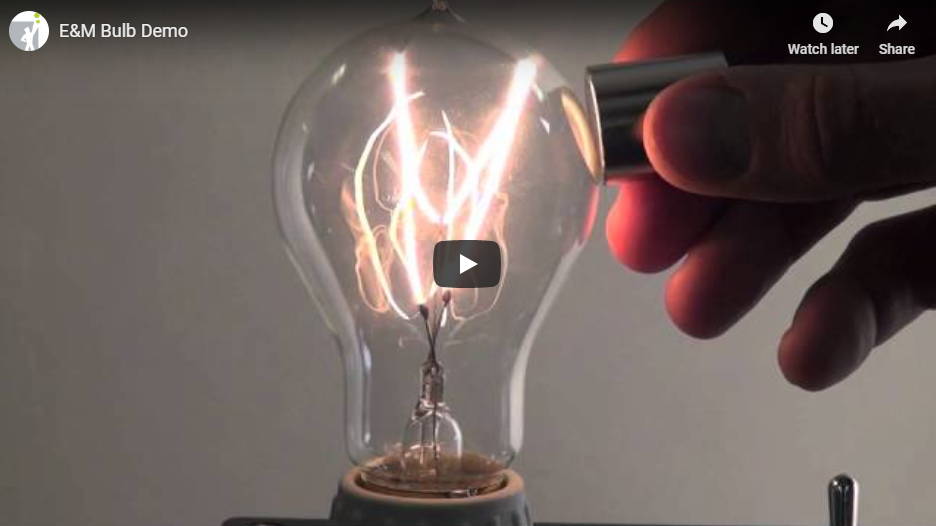Featured Products
The link between electricity and magnetism finds its legendary roots back to Hans Christian Ørsted when he supposedly found that electric current affected his compasses during a student lecture. That piece of scientific history may be one of exaggerated legend, but the marriage of electricity with magnetism has been widely known for over a century, later to be given a full mathematical explanation by Lord Kelvin and James Clerk Maxwell. The concept of electron movement causing the production of an ensuing magnetic field is a fundamental model used in describing electromagnets, generators, transformers and electric motors.
Students can witness the magnetic fields produced by electron movement using compass deflections and observe first-hand the mechanical spin of a solenoid in an electric motor. Using the "Electricity & Magnetism Light Bulb Demo", you will demonstrate to your students the relationship between electricity and magnetism in an amazing and unconventional way, using a Victorian light bulb under conditions not normally observed in everyday life. When a wire that carries an electrical current is placed within a magnetic field, each of the moving charges, which comprise the current, experience the Lorentz force and together they can create a macroscopic force on the wire. The following equation, in the case of a straight, stationary wire is as follows:
F = I (L x B)
where L is a vector whose magnitude is the length of wire, I is the conventional current flow, B is the Magnetic Flux Densit,y and F is the force on the wire. If your students are not already familiar with the magnetic right hand rule, now would be an excellent time to introduce them to the convention.
The Electricity & Magnetism Light Bulb Demo can clarify several important concepts:
- Using DC (Direct Current), electrons flow through a bulb's filament in one direction.
- Using AC (Alternating Current), electrons flow through a bulb's filament in two directions.
- A magnetic field is produced when electrons flow through a conductor.
- When magnets are placed near wires that carry electric current, a force is exerted on the wire. (Technically, the force is on the electrons in the wire. The electrons are "trapped" in the wire therefore causing the wire to move instead of the individual electrons.)
- When a wire carrying an electrical current is placed in a magnetic field, each of the moving charges (electrons), which comprise the current, experiences the Lorentz force and together they can create a macroscopic force on the wire itself.
Acknowledgements:
Thank you to Buzz Putnam, Physics Teacher and Whitesboro High School Science Department Chairman, for his development of this product and his assistance in writing these instructions.


